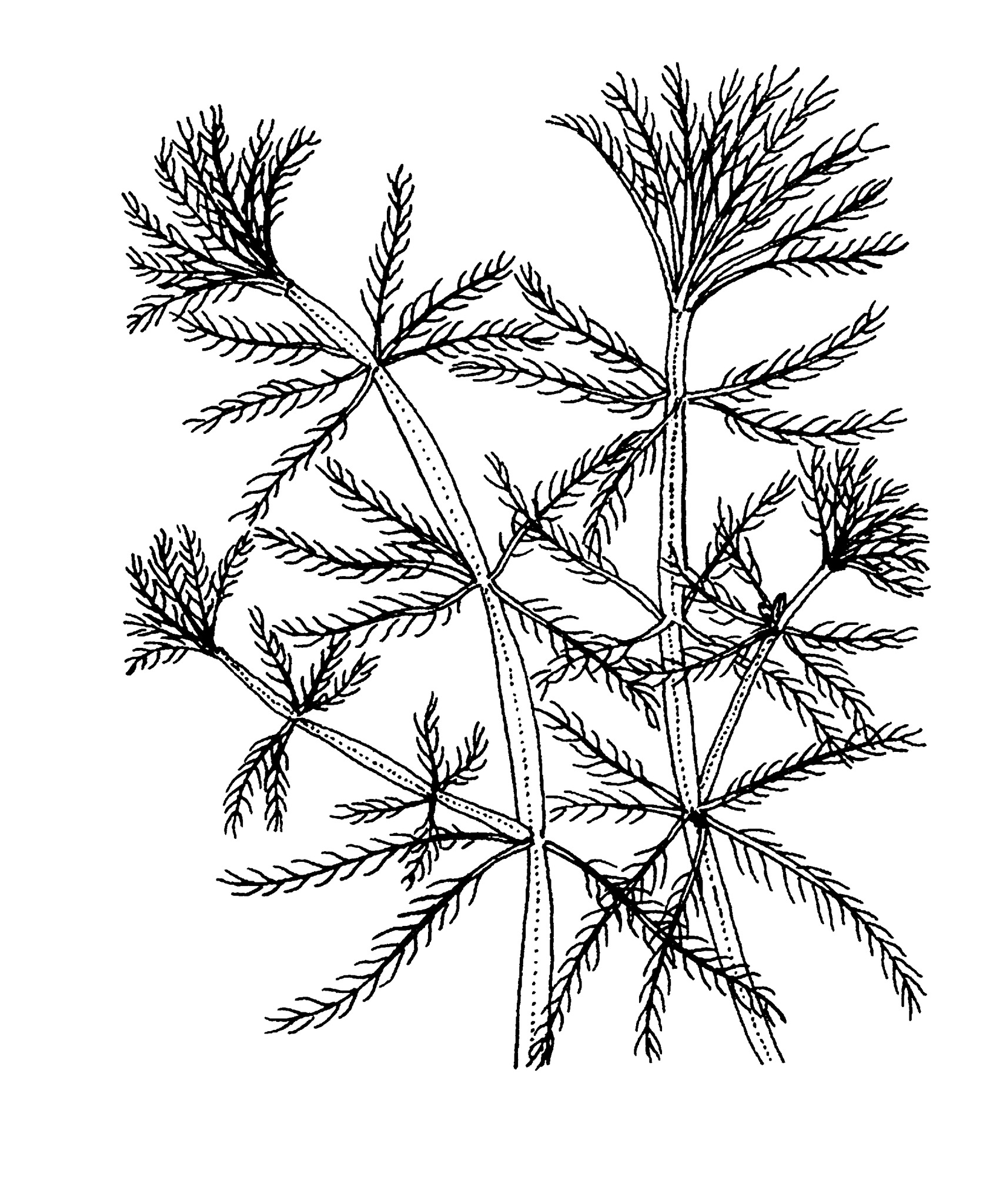
Greek myrios — countless, phyllon — leaf, referring to the finely divided feathery submerged leaves of many species.
Mostly submerged aquatic, annual or perennial herbs; rarely emergent. Leaves whorled, opposite, alternate or irregularly arranged, the submerged ones deeply pinnately divided, the emergent ones entire or toothed. Flowers mostly unisexual and solitary in the axils, sexes on the same or different plants.Male flowers 4(8)-parted, stamens mostly 8. Ovary usually of 4 carpels. Fruit a nut, splitting into 2 or 4 nutlets.
Grown mostly as an ornamental aquarium weed.
60 species, cosmopolitan but with centres of distribution in Australasia, N America and India to Indochina. Australia has 31 endemic species.
Cuttings.
Aquarium and pool plants.
Submerged aquatic plants with pinnate leaves. Similar to Ceratophyllum which differs in having dichotomous leaves.
Orchard (1981, 1985).
Source: (2002). Haloragaceae. In: . Horticultural Flora of South-eastern Australia. Volume 3. Flowering plants. Dicotyledons. Part 2. The identification of garden and cultivated plants. University of New South Wales Press.
